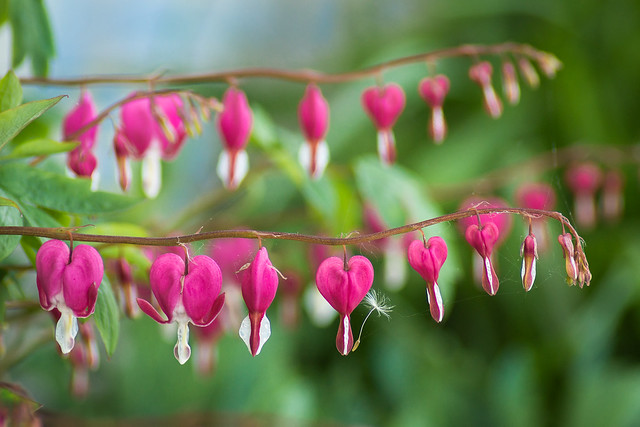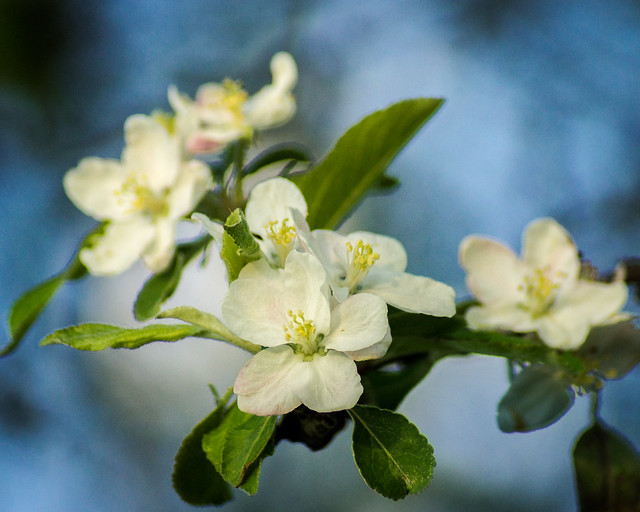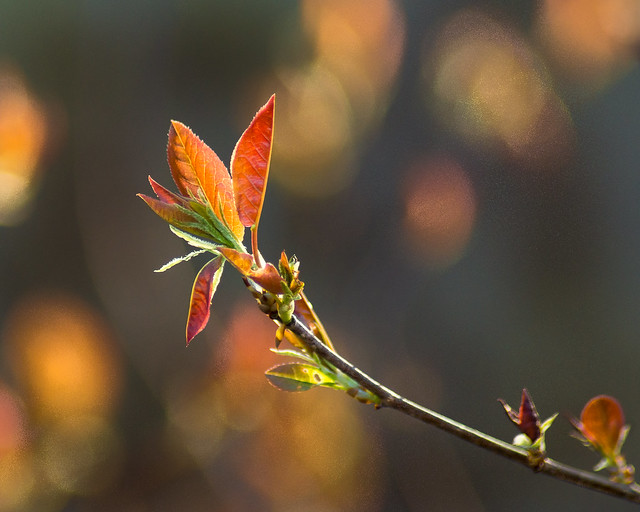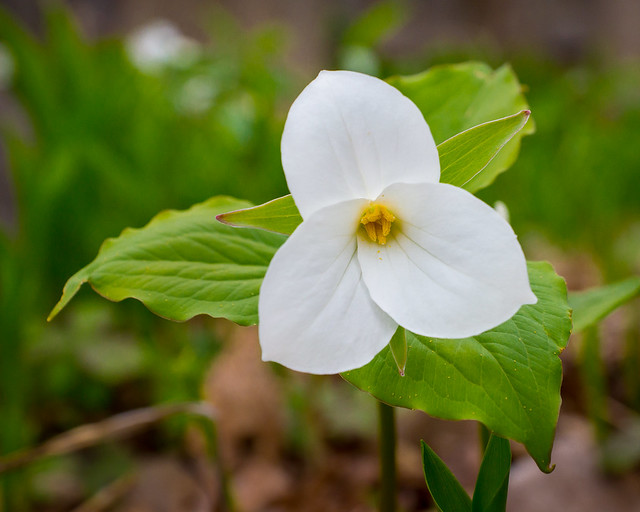Macro
Captivating Beauty
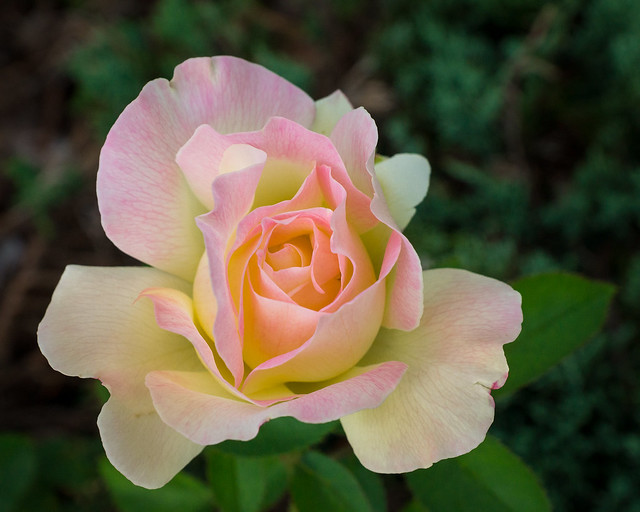
This rose may be one of the most beautiful flowers I’ve ever photographed. It is not perfect or without blemish, but there’s something about its soft blush of pink and the gentle furl of its delicate petals that captivates me; makes it difficult to look away. I snapped a lot of frames of this bloom over a couple of days. (Please excuse my gushing. I understand, beauty is in the eye of the beholder and it may not have the same effect on everyone.)
I found this beauty in, of all places, the small flowerbed of a motel in Branson, Missouri – the Yellow Rose Inn & Suites. They had a nice variety of blooming flowers around the property but, ironically, there were no yellow roses.
You can view a larger version of this photo by simply clicking on it.
Liberal Supply of Bleeding Hearts
Forked Tongue
 I’m not a ophiologist, but I believe this is a Western Fox Snake – also commonly called a Pine Snake. This formidable looking serpent, measuring a bit longer than 4 feet, was spotted gliding across our lawn. My camera’s fast shutter speed stopped that quickly flicking tongue. My apologies to those who are creeped out by snakes.
I’m not a ophiologist, but I believe this is a Western Fox Snake – also commonly called a Pine Snake. This formidable looking serpent, measuring a bit longer than 4 feet, was spotted gliding across our lawn. My camera’s fast shutter speed stopped that quickly flicking tongue. My apologies to those who are creeped out by snakes.
Here’s a bit of info about this type of snake from a Wisconsin DNR publication…
Family: Colubridae Size: 36-56 in. Status: Common
The fox snake has many large reddish-brown, chocolate brown, or black mid-dorsal blotches along its back and other smaller blotches on its sides on a background color of yellow, tan or olive gray. The head of adults is usually a dark copper, rust or orange color. They live in a variety of open habitats including marshes, sedge meadows, prairies and old fields. Their diet consists primarily of rodents and ground-nesting birds. Young fox snakes will occasionally eat amphibians. This species is the most frequently encountered snake in people’s homes, especially if the house has an old rock foundation where the snake(s) may be hunting for food or hibernating in the basement. The fox snake is often mistaken for the venomous copperhead snake due to its head color, and subsequently is often killed. Copperheads do not live in or near Wisconsin. Fox snakes are also often mistaken for rattlesnakes, as they often ‘rattle” their tails in dry leaves, grasses or against objects when disturbed.
To view more of the detail, click on the image and a larger version will open in a new browser tab.
Apple Blossom Time
It’s A Spring Thing
Meeting of the Ferns
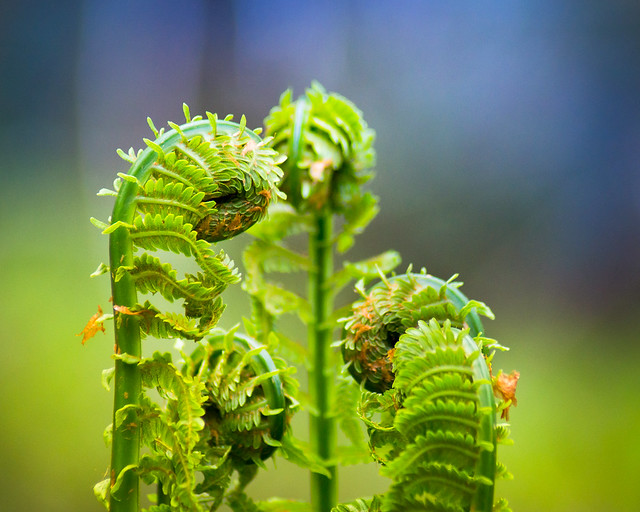
This is an interesting study in natural design and form. These are bracken ferns in the early stages of their season. I found these on a recent springtime walk through the woods.
Like a flower blooming, these ferns uncurl upward and spread their fronds. In a couple of weeks, they will cover the forest floor with lush, green foliage.
To get a closer look, click on the photo and a larger version will open.
Simple Pleasures
Spring Floral Flair
Fresh Trillium
Dutchman’s Breeches

These tiny flowers are a favorite because of their unusual shape that earned them their fun name.
Dutchman’s Breeches is a unique wildflower that gets its name from the flowers that dangle down from thin stalks rising from the lush green plant. The flowers get their name from the blooms that resemble pantaloons hanging upside down and slightly inflated. They are early spring bloomers, arriving April to May, are approximately ¾ inch in length, and white to pinkish in color with a yellow line at the bottom of the flower that resemble a belt on the pantaloons.
For a more detailed view of these little beauties, click on the photo and a larger version will open in a new browser tab.



















































